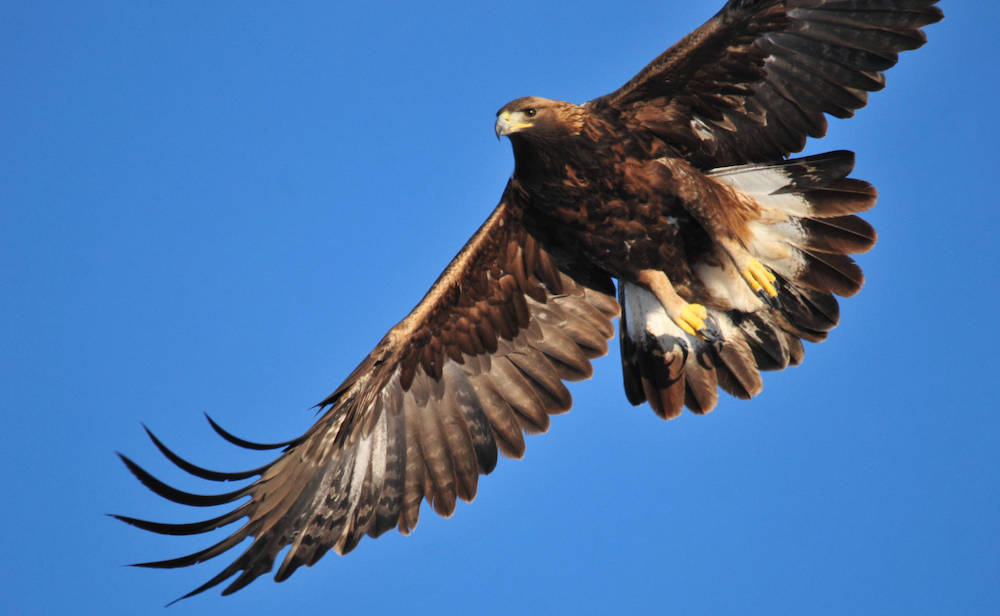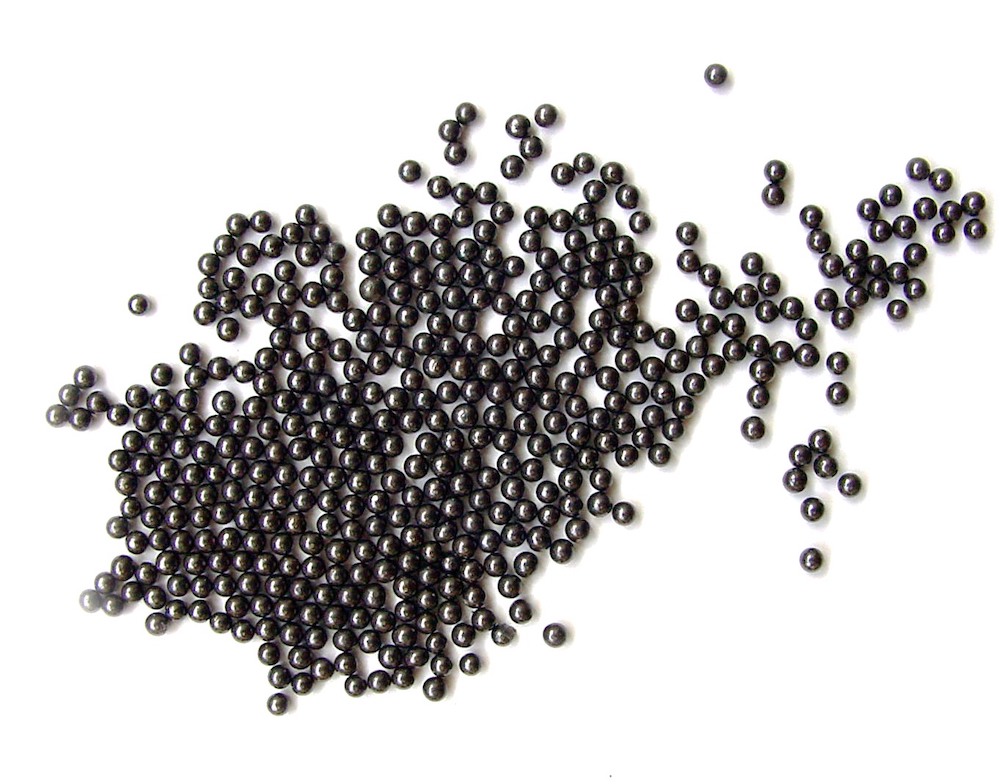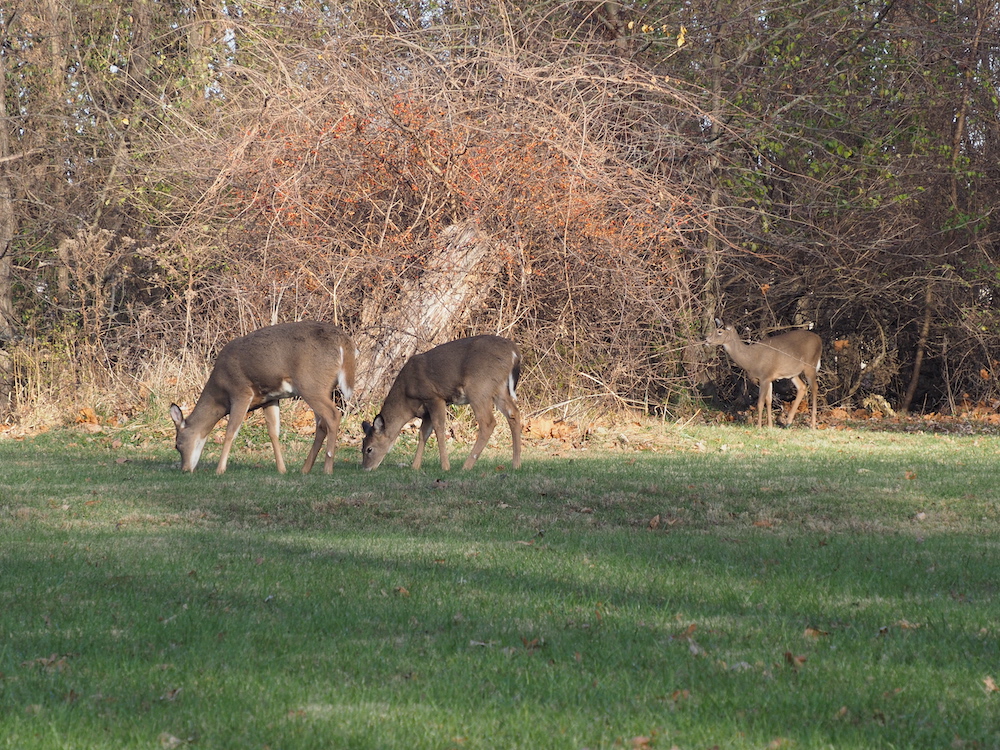
Photo by Dave Menke, USFWS.



Photo by Dave Menke, USFWS.
For many years, news reports on the bald eagle have celebrated the recovery, and continued growth, of the population thanks in large part to protective regulations and a ban on DDT. The bald eagle was declared an endangered species in the U.S. in 1967 and reclassified from federally endangered to threatened in 1995. In 2007, population numbers warranted removal of the bald eagle as a threatened species.
According to the Breeding Bird Survey, between 1966 and 2019 the estimated growth of the bald eagle population within Illinois was +8.32 percent per year.
“That is an incredibly good population trend,” noted Jim Herkert, former Executive Director of the Illinois Audubon Society. “Essentially, the 8.32 percent per year growth means the population is doubling every 10 years. This trend puts the bald eagle as the ninth fastest increasing species in the state over the last 50-plus years, behind only the Eurasian collared-dove, house finch, Canada goose, cliff swallow, ring-billed gull, sandhill crane, wild turkey and double-crested cormorant.”

The Illinois Spring Bird Count also tracks bald eagle numbers. The 2021 report includes the following notation: “Bald eagle numbers continue to climb with another record-breaking year of county (91) and individual (764) detections.”
Although bald eagles may be increasing in Illinois, that may not be the case throughout their range. A report casting doubt on the long-term growth of North America’s bald eagle and golden eagle populations recently gained national attention.
Published in the journal Science, a paper titled “Demographic Implications of Lead Poisoning for Eagles Across North America” summarized research conducted between 2010 and 2018 by scientists from the U.S. Geological Survey, Conservation Science Global, Inc. and the U.S. Fish and Wildlife Service. Based on the level of lead exposure found in 1,210 bald and golden eagles from 38 states, scientists found that the bald eagle population growth rate has slowed by 3.8 percent, and the golden eagle population has slowed by 0.8 percent.
While a naturally occurring element in the environment, lead has no functional role in the system of plants or animals and is a highly toxic environmental product. Stomach acids, and in birds the grinding action of the gizzard, breaks down lead pellets allowing minute particles to enter the bloodstream. Lead poisoning results in neurological and cardiovascular issues including damage to the brain, spinal cord, kidneys and liver, and results in a slow and painful death.
The dangers of lead have been documented for quiet some time. The toxicity of lead shot to birds was first reported in 1894 by American anthropologist, historian, naturalist and writer George Bird Grinnell (1849-1938). Researchers in Illinois were key to pointing out the hazards that lead shot posed to waterfowl. Investigating the reasons for the spring 1972 die-off of 1,500 birds at Rice Lake State Fish and Wildlife Area (Fulton County), Illinois Natural History Survey researchers found that of the 96 lesser scaup examined, at least one lead pellet was found in the gizzard of 75 percent of the birds. Overall, examined birds had lost 30 to 35 percent of their body weight before dying. Other notable early research projects are summarized in the INHS report A Review of the Problem of Lead Poisoning in Waterfowl by Glen C. Sanderson and Frank C. Bellrose.
Based on a host of biological studies from across the United States, in 1992 the U.S. Fish and Wildlife Service (USFWS) implemented a nationwide ban on the use of lead shot for waterfowl.

Studies have shown that the ban on lead shot for waterfowl hunting made a difference. A recent study (Blood Lead Declines in Wintering American Black Ducks in New Jersey Following the Lead Shot Ban) compared the levels of lead found in black ducks in 1978, prior to the USFWS lead shot ban, with blood drawn from birds in 2017. A nearly fourfold decline, from 79 percent to 20 percent, was noted.
Studies have also shown that steel shot can be just as effective as lead. In Illinois, Matthew B. Ellis and Craig A. Miller reviewed 37 years of waterfowl harvest data, overlapping the 1992 transition to non-toxic shot, to assess changes in the crippling rate of waterfowl. The 2022 study noted that prior to the lead shot ban the crippling rate for ducks and geese was 23 percent. After the ban, the crippling rate dropped to 15 percent for ducks and 11 percent for geese.
Across the country, various research projects are targeting questions intended to assist land managers and biologists develop a better understanding of lead exposure in mourning doves. An estimated 100 million shots are fired annually at mourning doves, which often are hunting on managed shooting fields where lead shot densities may be high. Many of the studies focus on the increased risk for ingesting pellets and whether a change in the type of ammunition used will alter hunter metrics or hunter satisfaction. See the Select Readings section for sample research summaries.
Mourning doves ingest spent shot—similar in size to many of the seeds they commonly consume—when feeding in fields where hunting has occurred. Shot scattered across fields and found in the sediments of aquatic habitats also may be coincidentally consumed by waterfowl feeding on seeds or vegetation. The Illinois Department of Natural Resources (IDNR) conducted analyses to identify state sites with the highest shot deposition or where it is likely that lead could be deposited in wetlands. Based on those studies, the use of non-toxic shot for doves and upland hunting is now required on some IDNR sites.

Researchers have not restricted assessments of the presence of lead in wildlife to just birds.
In a 2020 Illinois Wesleyan University study published in the Bulletin of Environmental Contamination and Toxicology, researchers found that 48 percent of ground meat samples from white-tailed deer killed with lead slugs in Illinois were contaminated with lead. The level of lead in meat from deer harvested by archers also was examined, with no lead recovered from those venison samples. The research team equated the level of lead fragments found in sampled venison packages to lead occurring in one out of every four venison burgers. Researchers stressed the use of non-toxic lead to minimize human health risks.
Working to offer a solution to eagles’ lead consumption, Ed Britton, USFWS Wildlife Refuge Manager for the Savanna District of the Upper Mississippi River National Wildlife and Fish Refuge, serves as Chair for a USFWS Regional Voluntary Non-Lead Team. The team’s mission is to provide outreach materials and public awareness for the voluntary use of non-lead ammunition on national wildlife refuges within the eight-state Region.

“The team formed in 2014 after our research study titled “Bald Eagle Lead Exposure in the Upper Midwest” was published in the USFWS Journal of Fish and Wildlife Management,” Britton explained. “The team provides non-lead ammunition outreach materials and messaging for 56 national wildlife refuges in our Region.”
On USFWS sites within this Region, non-lead ammunition is required for all hunting with shot, no matter the species, with lead shot allowed for single projectile ammunition such as slugs, muzzleloaders and rifles.
“Our outreach is primarily focused on deer hunting, which is one of the greatest exposure pathways for lead poisoning in bald eagles due to the presence of lead fragments in discarded gut piles that these birds scavenge,” Britton continued. “A piece of lead smaller than one grain of rice can be lethal to a bald eagle, if ingested.”
The opportunity to view bald eagles in Illinois has been steadily increasing, and eagle watching is a popular wintertime activity along Illinois’ major river systems. Despite the growing nesting population, IDNR is interested in furthering records of nesting eagles. Reports can be submitted to the Illinois Natural Heritage Database.

Additional Select Readings
Illinois Department of Public Health Lead in Venison
Ingested shot and tissue lead concentrations in mourning doves
A comparison of lead and steel shot loads for harvesting mourning doves
Kathy Andrews Wright retired from the Illinois Department of Natural Resources where she was editor of OutdoorIllinois magazine. She is currently the editor of OutdoorIllinois Journal.
Submit a question for the author